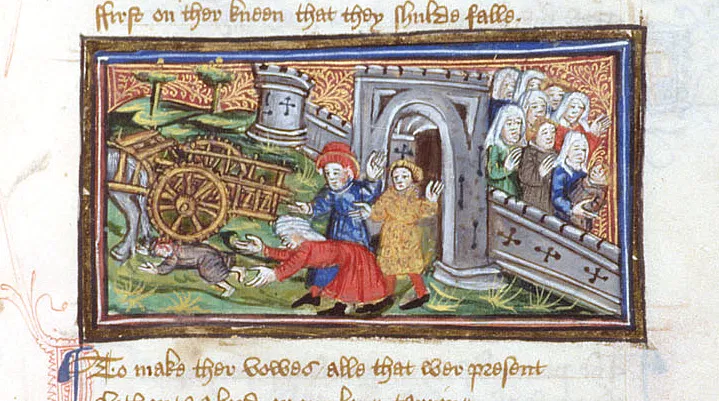Accidents happened then as now. From Medievalists:
City officials also had to watch out for property owners who wanted to expand their buildings, often by taking away bits of the street. Noting that the narrow streets would be impeded, mayors and aldermen would order building owners not to proceed with their expansion plans, and in some cases, even had parts of buildings torn down.Share
The efforts to stop these building extensions even meant having to say no to the king at times – during the year 1312 King Edward II wrote to the city of London that he wished to make an addition to one of the houses he owned. The Mayor and Sheriffs responded, denying the request. Among the numerous reasons, they cited “that such carts as are wont to load firewood at Castle Baynard’s wharf, have been in the habit of passing through that place, as along a common way; whereas, if it were built upon, those same carts, when meeting there, would not be able to pass, by reason of the narrowness of the road.” If that was not enough, they added, “if it should happen that the Queen should pass along that road in her chariot, such building would in like manner be a nuisance there, on having to turn the chariot, or in case of her meeting another chariot there.”
Another problem for city authorities was the habit of residents keeping animals, and then letting them out onto streets. The most troublesome of these were pigs – people would let them out, knowing that these animals would forage through the trash for food, but this could also lead to them creating more mess in the streets and even knocking down people. Officials throughout England were trying to find ways to stop this practice, with London and other cities issuing orders that if a pig was found wandering the streets, it could be killed automatically – and if the owner wanted to have the carcass afterwards, they would need to pay four pence for it. Other towns also had laws to keep dogs on chains or leashes.
Carts and wagons could be another big traffic problem in the Middle Ages, starting with the fact that many had wheels shod with iron, which would rip up the pavement of the streets. These were often banned. On occasion, one would also see limits placed on how many carts could be in a certain area or go through city gates, as people complained there were too many of them. (Read more.)


















No comments:
Post a Comment